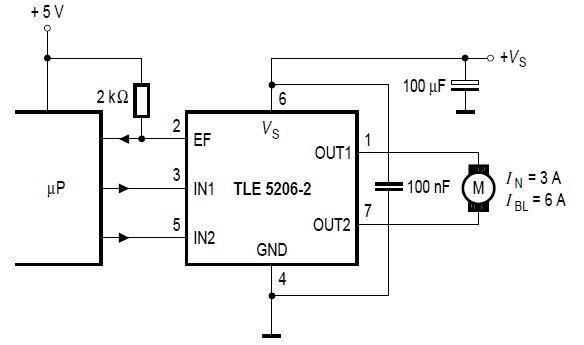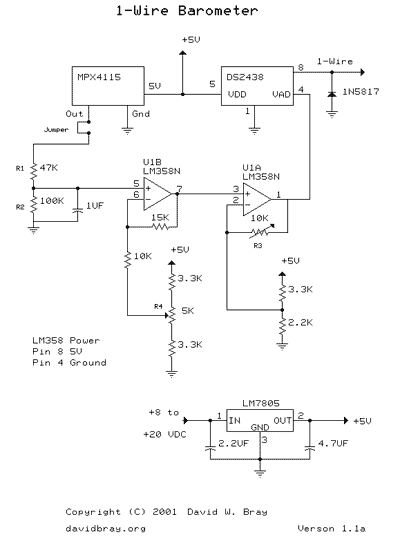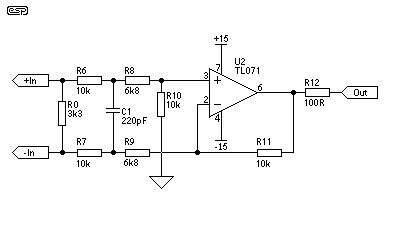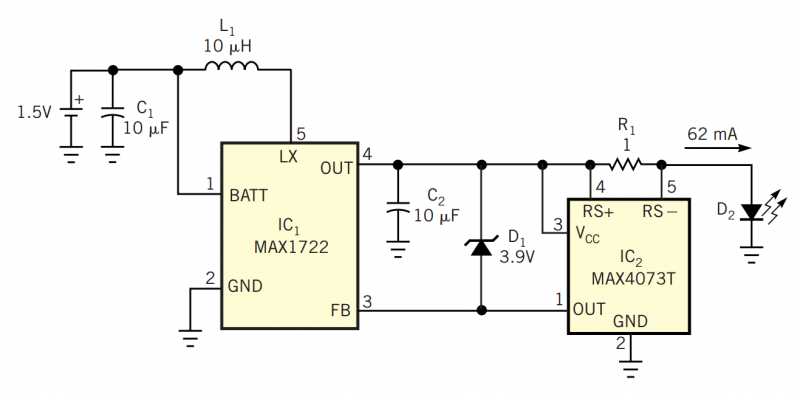
STEPPER MOTOR DRIVER

This circuit utilizes four IRF510 power FETs driven by a CMOS counter to produce the required two-phase drive quadrature. While integrated circuits (ICs) can perform this function, this method is beneficial for experimenters as it employs widely available components. The stepper motor used in this circuit was salvaged from a discarded floppy disk drive.
This circuit design effectively demonstrates the control of a stepper motor using discrete components, specifically four IRF510 power FETs, which are known for their high efficiency and fast switching capabilities. The CMOS counter serves as the primary control unit, generating the two-phase quadrature signals necessary for stepper motor operation.
The four FETs are arranged in a configuration that allows them to alternate the current flow through the motor windings, enabling precise control over the motor's position and speed. The IRF510 FETs are selected for their ability to handle significant power levels, making them suitable for driving the stepper motor without overheating or suffering from performance degradation.
In this application, the CMOS counter generates square wave outputs that are fed to the gates of the FETs. The two-phase output provides the required phase shift that allows the stepper motor to increment its position smoothly. The use of a CMOS counter is advantageous due to its low power consumption and high noise immunity, which enhances the reliability of the circuit.
The stepper motor, sourced from a discarded floppy disk drive, typically consists of multiple coils arranged in phases that correspond to the quadrature signals generated by the CMOS counter. This recycling of components not only reduces costs but also promotes sustainable practices in electronics design.
In summary, this circuit exemplifies an efficient method for controlling a stepper motor using basic electronic components, highlighting the practicality of utilizing available parts for experimentation and learning in the field of electronics.In this circuit, four IRF510 power FETs are driven by a CMOS counter to generate the necessary two-phase drive quadrature. Although ICs are available to do this, this approach is handy for the experimenter because it uses commonly available parts.
The stepper motor was taken from a discarded floppy-disk drive.. 🔗 External reference
This circuit design effectively demonstrates the control of a stepper motor using discrete components, specifically four IRF510 power FETs, which are known for their high efficiency and fast switching capabilities. The CMOS counter serves as the primary control unit, generating the two-phase quadrature signals necessary for stepper motor operation.
The four FETs are arranged in a configuration that allows them to alternate the current flow through the motor windings, enabling precise control over the motor's position and speed. The IRF510 FETs are selected for their ability to handle significant power levels, making them suitable for driving the stepper motor without overheating or suffering from performance degradation.
In this application, the CMOS counter generates square wave outputs that are fed to the gates of the FETs. The two-phase output provides the required phase shift that allows the stepper motor to increment its position smoothly. The use of a CMOS counter is advantageous due to its low power consumption and high noise immunity, which enhances the reliability of the circuit.
The stepper motor, sourced from a discarded floppy disk drive, typically consists of multiple coils arranged in phases that correspond to the quadrature signals generated by the CMOS counter. This recycling of components not only reduces costs but also promotes sustainable practices in electronics design.
In summary, this circuit exemplifies an efficient method for controlling a stepper motor using basic electronic components, highlighting the practicality of utilizing available parts for experimentation and learning in the field of electronics.In this circuit, four IRF510 power FETs are driven by a CMOS counter to generate the necessary two-phase drive quadrature. Although ICs are available to do this, this approach is handy for the experimenter because it uses commonly available parts.
The stepper motor was taken from a discarded floppy-disk drive.. 🔗 External reference





